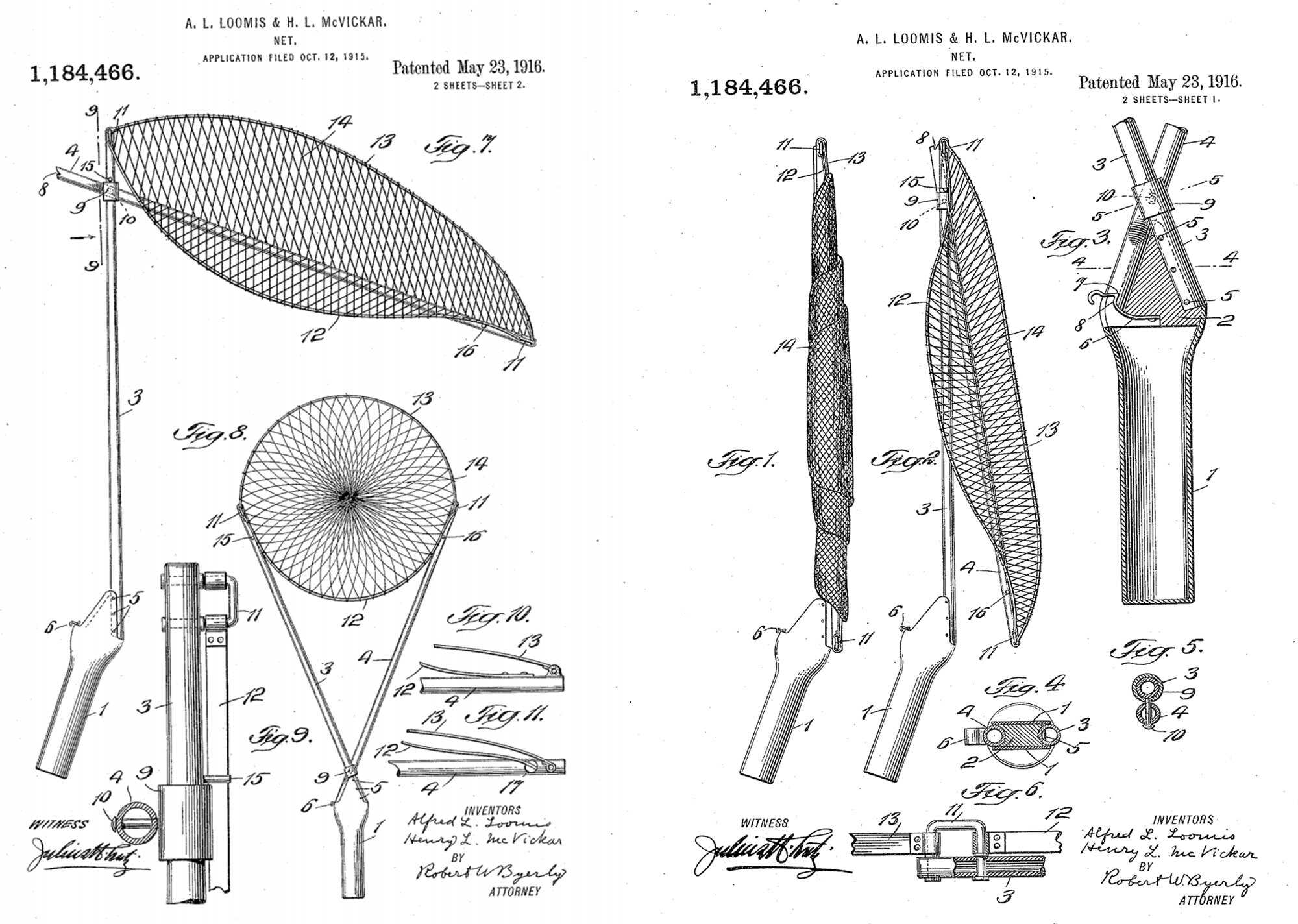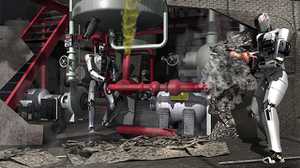The Patents of Alfred Loomis
Alfred Loomis may have been a Wall Street tycoon, but his real passion was scientific discovery. Today he is remembered for the advances he made in radar technology and how those advances contributed to the American military efforts in World War II. But in addition to that work, he has several patents to his name. Below are excerpts and drawings from some of his original patent applications.
External Shoe-Tree
Application filed February 6,1914
Patented August 11, 1914
Alfred L. Loomis
(excerpts from patent application)
"This invention relates to devices for preventing shoes from losing their shape and becoming creased and more particularly to that class of devices which are applied to the shoe externally for the purpose of keeping the shoe in its proper shape while, at the same time, allowing air to circulate freely inside the shoe in order that it may not remain damp."
"My shoe-tree possesses advantages over the forms of external shoe-trees heretofore suggested. One of the important advantages of my improved external shoe-tree is the convenience with which it may be used. In former devices, it was necessary to operate various clamps or other attachments in different parts of the device in order to secure the shoe to the shoe-tree. In many of the devices heretofore suggested, several different movements are necessary to operate the various means of attachment and, in consequence, these devices have proved too inconvenient to be useful. In my device, on the other hand, the shoe is quickly secured to the shoe-tree by a single movement."
"Another important advantage of my device consists in that it maintains a continual tension upon the shoe or shoes placed in it. This tension continually pulls down the back portion of the shoe and thus eliminates the transverse creases produced by wearing and straightens the sole much more effectively than former devices which merely hold the heel of the shoe in a fixed position. Furthermore, the strength of the tension with which the back of the shoe is pulled down can be readily regulated in my device."
See full patent application here.
Net
Application filed October 12, 1915
Patented May 23, 1916
Alfred L. Loomis and Henry L. McVickar

(excerpts from patent application)
"This invention relates to nets, and particularly to that class of nets which are used in rod fishing to net the fish after it has been played."
"The principal object of our invention is to provide a simple and convenient self-opening net. Our net in folded position is held in a case or scabbard hung from the angler’s belt while the fish is hooked and played. When the fish is worked in to where it may be netted, the angler need only grasp the handle of our net with one hand and with draw it from the scabbard, and the net will automatically open so that it is ready for instant use in netting the fish."
See full patent application here.
Toy
Application filed July 22, 1915
Patented April 10, 1917
Alfred L. Loomis

(excerpts from patent application)
"This invention relates to toys and has for its object to provide a new toy representing a race in which those playing with the toy take part."
"An important advantage of my new toy is that it provides a race in which the speed of each racer is controlled by a hand-lever in an irregular, and in what appears to persons playing with the toy, a mysterious way."
"Another advantage of my new toy is that, although the distance actually covered by the racers is comparatively short, the toy provides a race which lasts a considerable length of time and is throughout its continuance exciting, owing not only to the fact that the racers are apparently going at a high speed, but also to the fact that the relative position of the racers is constantly changing throughout the race."
See full patent application here.
Chronograph
Application filed November 7, 1919
Patented May 3, 1921
Alfred L. Loomis, Paul E. Klopsteg, Paul G. Agnew, and Winfield Stannard

(excerpts from patent application)
"The invention described herein may be used by the Government, or any of its officers or employees in prosecution of work for the Government, or by any other person in the United States, without payment of any royalty thereon."
"This invention relates to electrical recording apparatus of the type used to record the occurrence of events at fixed or variable intervals and especially to that kind of electro-chronographic apparatus, in which small intervals of time are graphically recorded on a suitably prepared surface or strip on an isochronally moved drum, by causing an electric spark to jump from spark points to the drum at the instants that the events to be recorded take place."
See full patent application here.
Method and Apparatus for Forming Emulsions and the Like
Application filed September 2, 1927
Patented November 12, 1929
Alfred L. Loomis and Robert Williams Wood

(excerpts from patent application)
"This invention relates to methods and apparatus for forming emulsions and the like, and aims to provide an effective method and means for causing ultra-microscopic division of a liquid or solid, and the dispersion thereof through the liquid normally immiscible therewith. It may be used to produce stable emulsions between liquids which are not only immiscible, but have widely different specific gravities, to produce colloids, and to produce homogeneous stable suspensions."
"In accordance with the invention, fine dispersion of a liquid or solid is caused by placing it in a liquid and passing powerful compression waves of radio-frequency through the containing liquid."
"A feature of the invention consists in providing a method for producing in a liquid, powerful compression waves of radio-frequency, or “super-sonic” waves as such compression waves are somewhat inaccurately termed, because of the fact that they resemble sound waves in everything except frequency."
See full patent application here.
Microscope Centrifuge
Application filed December 12, 1931
Patented May 9, 1933
Alfred L. Loomis and Edmund Newton Harvey

(excerpts from patent application)
"This invention relates to optical instruments and more particularly it has reference to a device which is used for viewing objects through a microscope while the objects are being subjected 'to centrifugal force."
"In making certain experimental studies of objects, such as living cells, it has been customary to use the centrifuge (1) for the determination of the relative density and total volume of granules present (2) for the observation of the behavior of mitotic figures and other structures under centrifugal force and (3) for the measurement of the viscosity of the protoplasm. In making such studies and observation, the usual procedure is to centrifuge the cells in capillary tubes, remove them from the tubes and then place them under a microscope to observe what has happened. It would, however, be far better to be able to actually study and observe the cells through a microscope while the cells were under the influence of centrifugal force."
"One of the objects of our invention is to provide a device for microscopically viewing an object while it is under the influence of centrifugal force. Another object is to provide a microscope-centrifuge having means for bringing the object and the optical system into proper focal relation. A further object is to provide a device of the character described which will be relatively simple in structure yet efficient in operation."
See full patent application here.
Long Range Navigation System
Application filed July 3, 1945
Patented April 28, 1959
Alfred L. Loomis

(excerpt from patent application)
"This invention relates to a position indicating system and particularly to a radio pulse type indicating system wherein a plurality of transmitting stations at known points radiate known time related pulse signals, which are detected at a receiver and timed With respect to each other, so as to indicate the difference in their propagation times whereby the position of the receiver may be determined."
See full patent application here.








